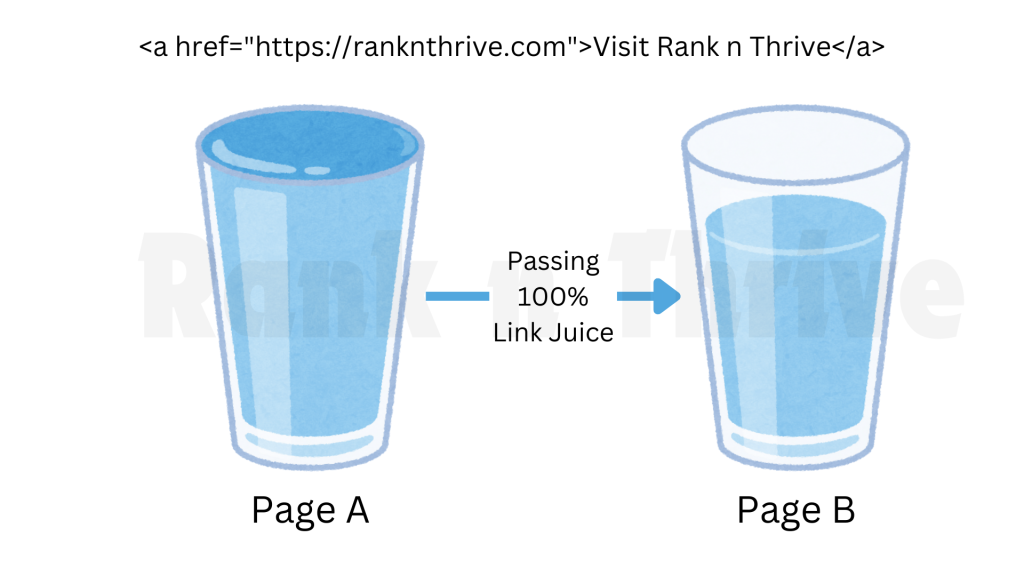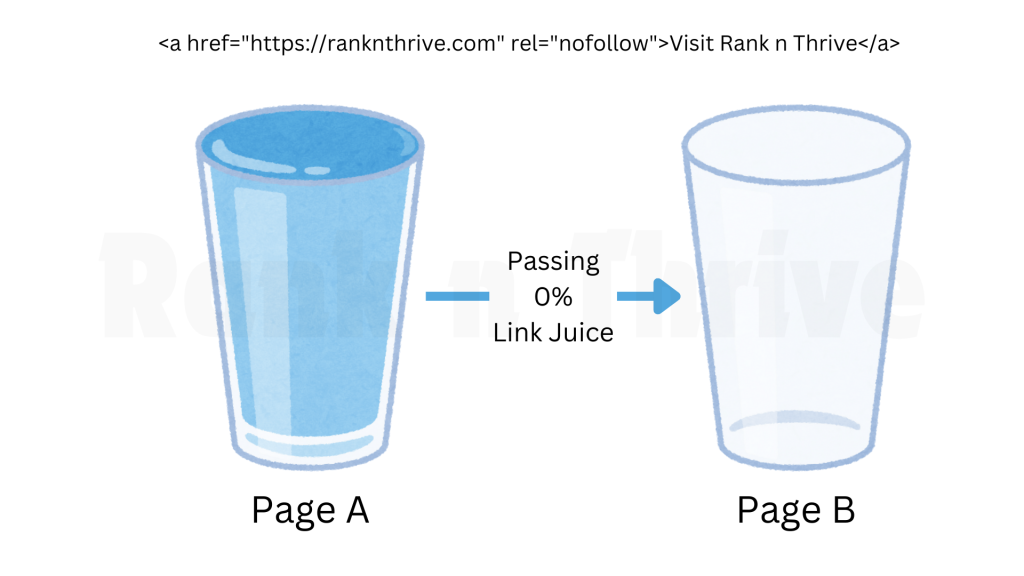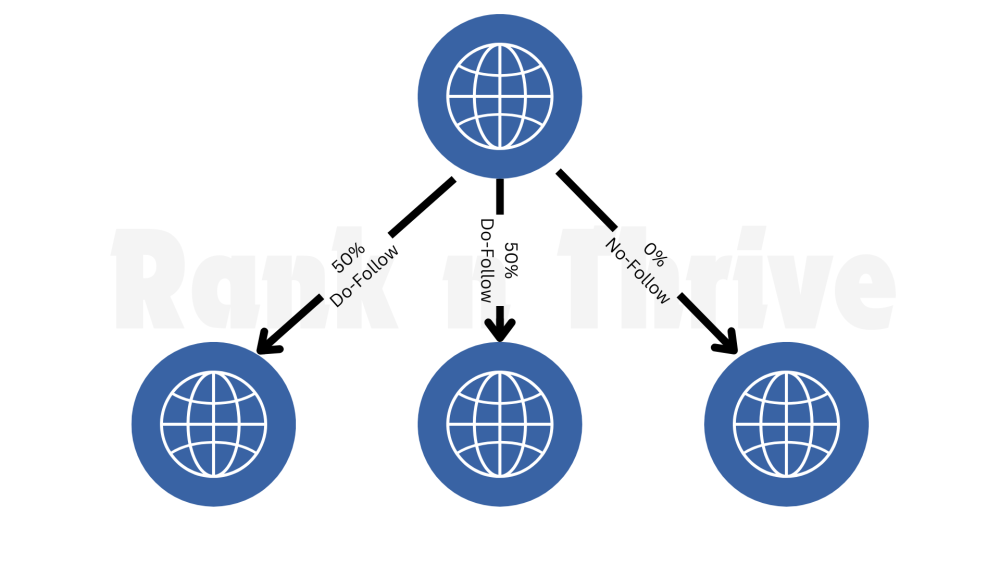Do-Follow Backlinks Vs No-Follow Backlinks
Backlinks play a crucial role in SEO, as they determine how authority and credibility (also known as “link juice”) flow between websites. Understanding the difference between dofollow and nofollow backlinks can help you build a smarter, more effective link-building strategy. If you’re new to link-building strategies, you might think, “Do all backlinks benefit my site equally?” The answer lies in the concept of link juice. Let’s read below and understand with the help of images.
What Are Do-Follow Backlinks?
A do-follow backlink is the default type of link that allows search engines to follow it and pass link juice to the linked page. These links directly impact the SEO value of the target website by improving its authority and ranking potential. Do-follow backlinks are highly valuable because they signal to search engines that the linked page is trustworthy and relevant.

Among other types of dofollow backlinks, cloud stacking backlinks are one of the most effective one that improves ranking in short time.
Example:
A blog post linking to another site without any additional attributes is typically a do-follow link:
<a href="https://ranknthrive.com">Visit Rank n Thrive</a>
What Are No-Follow Backlinks?
No-follow backlinks were introduced by Google in 2005. Adding the rel="nofollow" attribute to a link’s HTML tells search engines not to pass link juice. If you are unsure about the authority of the site you’re linking to or the relevance of its content, using the rel="nofollow" attribute helps prevent potential negative SEO impacts on your site.

Example:
<a href="https://ranknthrive.com" rel="nofollow">Visit Rank n Thrive</a>
No-follow links are commonly used for:
- Preventing spam (e.g., blog comments or forums).
- Paid or sponsored content.
- User-generated content (UGC), such as reviews or forum posts.
Is It Worth Making Nofollow Backlinks?
In September 2019, Google announced that the rel="nofollow" attribute would be treated as a hint rather than a strict directive for crawling and indexing purposes. You can read the official document on GOOGLE FOR DEVELOPERS.
This change means that while nofollow links may not always pass link juice but they can still influence indexing and rankings in certain situations. So yes, its still worth to make nofollow backlinks.
You should not acquire all of the dofollow backlinks rather than your backlink profile must be diversified. Means it should be a misture of dofollow and nofollow backlinks.
For example, nofollow links from high-authority sites can drive referral traffic, improve visibility, and indirectly improve SEO.
When to Use NoFollow Links
NoFollow links play a crucial role in a balanced and ethical SEO strategy. While they don’t pass link juice or directly improve your page’s rankings, they are vital in specific scenarios where you need to maintain control over your site’s authority and reputation. Here’s a guide on when to use nofollow links:
1. Sponsored or Paid Links
If a link is part of a paid promotion, such as ads, affiliate links, or sponsored posts, it must include the rel="sponsored" or rel="nofollow" attribute. Search engines like Google strictly discourage passing link juice through paid links as it violates their guidelines.
2. Untrusted or Low-Quality Websites
When linking to sites you don’t fully trust or aren’t confident about their credibility, use the nofollow attribute. This prevents your site from unintentionally endorsing low-quality or spammy sites.
3. Comments and User-Generated Content (UGC)
Comments sections and forums section in your website often contain links added by users. To prevent spam and avoid passing link juice to potentially harmful sites, mark such links with rel="nofollow" or rel="ugc". Many content management systems like WordPress automatically add this attribute to comment links.
4. Outbound Links in Sponsored Reviews
If your website frequently publishes reviews with links to products or services, use nofollow for those links to maintain transparency and avoid appearing manipulative.
5. External Links Not Relevant to Your Niche
Sometimes, you may need to link to external resources outside your niche for context or citation. Use nofollow to ensure that link juice is reserved for pages within your niche.
Difference Between Dofollow & Nofollow Backlinks
| DoFollow Backlinks | NoFollow Backlinks |
|---|---|
| Links that pass link juice to the linked page. | Links that do not pass link juice to the linked page. |
| No special attribute; it’s the default for links. | Includes rel="nofollow" in the HTML. |
| Improves search rankings and improves authority of linked pages. | Doesn’t directly affect rankings but can drive traffic. |
| Treated as endorsements of the linked page. | Treated as “hints” (since 2019) rather than endorsements. |
| Linked to trusted and authoritative content. | Linked to paid link, affiliate link, untrusted or user-generated content. |
Frequently Asked Questions
1. What is the main difference between do-follow and no-follow backlinks?
Do-follow backlinks pass link juice and authority from the linking website to your site, helping improve SEO rankings. No-follow backlinks, on the other hand, don’t pass link juice but can still drive traffic and increase visibility. Both types serve different purposes in a well-rounded backlink strategy.
2. Can no-follow backlinks still benefit my SEO?
Yes, while no-follow backlinks don’t pass link juice, they can still drive referral traffic and improve brand visibility. High-quality no-follow links from authority sites can signal relevance and trust to search engines.
3. How do I check if a link is do-follow or no-follow?
Inspect the HTML code of the link using your browser. If the link has the attribute rel="nofollow", it’s a no-follow link. If it doesn’t have any such attribute, it’s a do-follow link.
4. Should I aim for more do-follow or no-follow backlinks?
A balanced approach is best. Do-follow backlinks directly help your SEO rankings, while no-follow backlinks enhance brand awareness and traffic. Focus on quality over quantity for both types.
5. Can no-follow links harm my SEO?
No-follow links won’t harm your SEO because they don’t pass link juice. However, linking to or receiving no-follow links from spammy websites can affect your site’s reputation. Always focus on reputable sources.
6. What are some common sources of do-follow backlinks?
You can get do-follow backlinks from guest posts, editorial mentions, resource pages, and backlinks from authoritative blogs. Always aim for links from websites relevant to your niche.
7. When should I use no-follow backlinks?
Use no-follow links when linking to untrusted or promotional sites, like advertisements or affiliate links. This prevents passing authority to irrelevant or low-quality sites and protects your SEO.
8. How can I identify a good do-follow backlink?
A good do-follow backlink comes from a high-authority, relevant, and trusted site. It’s ideally placed within the content, surrounded by contextually relevant text.
9. Do backlinks from social media count as do-follow or no-follow?
Most social media platforms like Facebook, Twitter, and Instagram use no-follow links. While they don’t pass link juice, they can still generate significant referral traffic and improve visibility.
10. Why aren’t my do-follow backlinks improving my rankings?
This could be due to the quality of the backlinks or other factors like poor content or website technical issues. Ensure your backlinks come from high-authority, relevant sites and complement them with strong on-page SEO.

